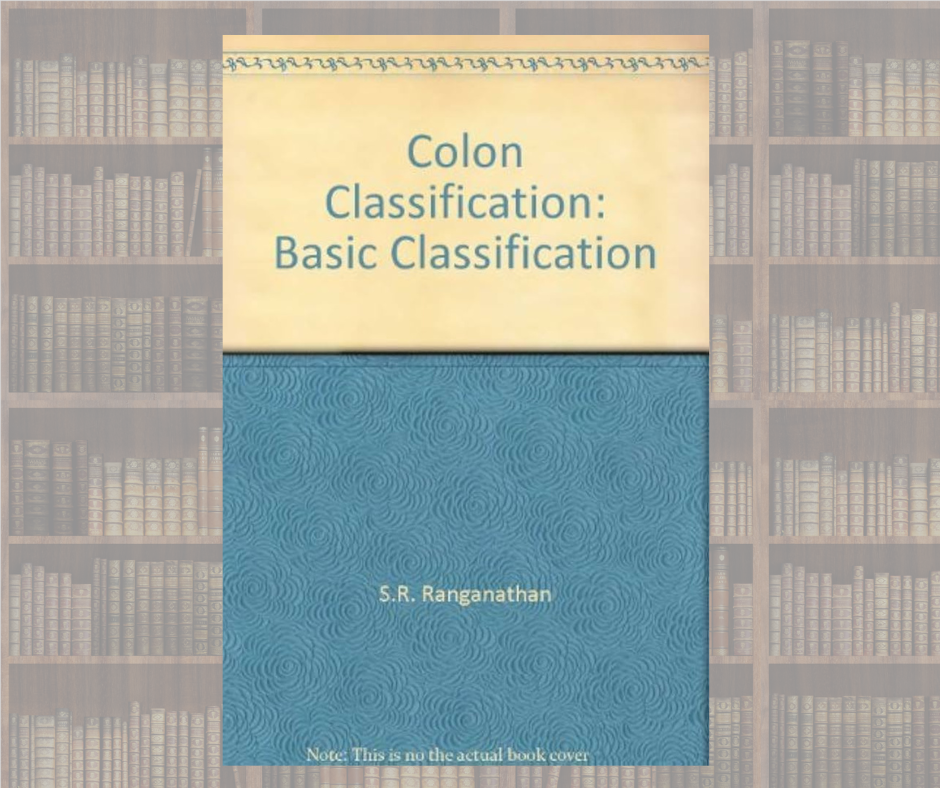Dewey’s decimal classification system was famous for its special symbols. The colon classification is also characterized by a special type of symbol. Ranganathan used the colon (:) symbol in his facet formula. The colon classification was the only symbol in the first version. Later, Ranganathan clarified the type and character of the facet by using semicolons, commas (,) or other punctuation marks.
The first edition of any classification was published in 1933. The seventh edition was published in 1987. It is not at all large in size, with only 6000 entries and its capital of instructions. There are a total of 26 letters in English. But Ranganathan brought about a revolution with his maximum imagination. One by one, a novel color revolution. The theory of arbitrary mixing of concepts in the classification of subjects suddenly seemed to Ranganathan like a flash of light. A toy shop in England had a mechanical set with small parts to make an engineering model and a child. The child had arranged the pieces in different ways and made a model. Ranganathan felt that if a child could do it, then this principle could be applied to the library and the work of classification would be much easier. Now it was necessary to formulate rules and formulate formulas. Ranganathan’s novel efforts began to mix concepts appropriately and more widely.

Principles of Colon classification:
In his method, Ranganathan has divided knowledge into several main parts. The similarity of the colon classification method with other classification methods ends here. The colon classification method is called a faceted method. The main ideas are divided into several features based on each category at the beginning. These features are called facets. Ranganathan has introduced five main categories to characterize the main ideas or elements from a subject. These categories are personality, matter, energy, space and time. To classify a document, the elements of the content of that document must be combined according to the specific method of classification. This combination method is the facet formula. Such a facet formula has been designed for each main category. Unlike other tabular classification methods, Ranganathan did not provide any ready-made numbers in his series. During classification, symbolic symbols or notations are developed with the help of such combinations as the book requires. In addition to the subject subdivisions within the main category, several more have been conceived that are applicable across all categories. Such as form, space, tense, and linguistic subdivisions.
Basic principles of Colon Classification:
The five principles of library science formulated by Ranganathan are called basic principles. They are the foundation of library science. These principles control the thinking process. In fact, they are the solution formula for any problem in library science. Basic principles are used at the basic level of the thinking process. Although they are generally used in the thinking process, they are especially applicable to classification. Ranganathan has developed six basic principles, which are as follows-
1. Law of Interpretation: The classification system can be explained by 1008 principles involving interpretation.
2. Law of Impartiality: There is no place for arbitrary or personal choice. The claim of rational choice is paramount.
3. Law of Compatibility : The claim of similar or complementary parts cannot be ignored.
4. Law of Saving : Saving can be in various ways, such as the amount of work of the employee, time, money, material or something else.
5. Local Needs Change Formula: Local needs should be acknowledged. Local issues should be given importance where appropriate.
6. Law of Osmosis: When a new classification system is adopted in a library, the old system still exists. Books kept in the old system are reclassified. The coexistence of the two systems and the gradual disappearance of the old system in the new system prove the validity of this formula.
The 7th edition of the book on Colon Classification
The 7th edition of the book on Colon Classification (1987) by S. R. Ranganathan is divided into three main parts.
Each part deals with a different aspect of the system’s theory, rules, and schedules.
1. Introduction
- Explains the theory and principles behind Colon Classification.
- Discusses PMEST facets, notation system, and the logic of faceted classification.
- Describes the citation order and how to build a class number from a subject statement.
- Outlines the history and development of CC from the 1st to the 7th edition.
2. Schedules
- Main Class Schedule – the 42 main classes with their subdivisions.
- Common Isolate Schedules – for space, time, and form.
- Special Isolate Schedules – subject-specific isolates (e.g., for medicine, engineering).
- Includes form headings for bibliographic forms like encyclopedias, dictionaries, and indexes.
3. Index
- An alphabetical index to all terms in the schedules.
- Provides ready reference to the corresponding class numbers.
- Includes cross-references for related subjects.
Main categories
| Z | General | E | Chemistry |
| 1 | World knowledge | F | Technology |
| 2 | Library science | G | Biology |
| 3 | Book science | H | Geology |
| 4 | Journalism | HX | Mineral science |
| A | Natural sciences | I | Botany |
| AZ | Mathematical sciences | J | Agriculture |
| B | Mathematics | K | Zoology |
| BZ | Physics | KX | Animal husbandry |
| C | Mechanical science | L | Herbs |
| D | Applied arts | LX | Pharmacy |
| M | Spirituality and mysticism | S | Psychology |
| ∆ | Humanities and sociology | ∑ | Social sciences |
| MZ | Humanities | T | Education |
| MZA | Fine arts | U | Geography |
| N | Language and literature | V | History |
| NX | Language and literature | W | Political science |
| O | Literature | X | Economics |
| P | Linguistics | Y | Sociology |
| Q | Religion | YX | Social service |
| R | Philosophy | Z | Law |
Sometimes the main subject and sub-subject are also included in the main category. An example of a main subject is history, an example of a sub-subject is botany. Some main categories are conventionally divided into sub-categories. Such sub-categories are identified as conventional categories. For example, the category R, i.e. philosophy, is memorable. That category is divided into such conventional categories: R1 Logic, R2 Epistemology, R3 Metaphysics, R4 Ethics, R5 Aesthetics .
The Colon classification system recognizes such division plans within the same main category from a philosophical and theoretical point of view or according to doctrine. These main categories are therefore called ‘system facets’. For example, the T category, i.e. the system facets within education, are T L %Pestalozzi’s doctrine TNI Montessori doctrine.
Sometimes a section within the main category is identified as a specialty. This is the result of the division of the main category and is called a special facet. For example, category L is herbal science; the special facets within this category are L9C herbal medicine for children, L9F herbal medicine for gynecology.



